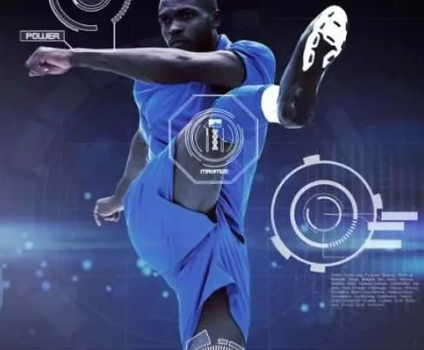
In the modern world, sports and technology have become deeply intertwined, changing how we play, watch, and manage sports. From devices that track athletic performance to AI-driven analytics, technology is revolutionizing the sports industry. Let’s explore how these advancements are shaping the world of sports today.
Boosting Athlete Performance
Athletes are constantly looking for ways to improve their performance, and technology plays a crucial role in helping them achieve their goals. Wearable gadgets, such as smartwatches and fitness trackers, monitor critical metrics like heart rate, speed, and recovery, allowing athletes to adjust their training programs accordingly. With the help of advanced data analytics, coaches can assess players’ performances, identify weaknesses, and create personalized strategies to enhance their skills.
Another breakthrough in sports technology is biomechanics. Through motion capture systems, athletes can refine their techniques and reduce injury risks. For example, runners can analyze their stride to optimize efficiency, while cricket bowlers can perfect their delivery mechanics to boost performance and prevent injury.
Revolutionizing the Fan Experience
Technology has brought fans closer to their favorite sports, offering immersive experiences that enhance viewing enjoyment. Augmented reality (AR) and virtual reality (VR) give fans the sensation of being on the field, even if they are miles away. Live streaming platforms and 360-degree cameras allow fans to watch games from a variety of angles, making it feel as though they’re attending the event in person.
Smart stadiums further elevate fan interaction by providing mobile apps for ticketing, seating arrangements, and live match statistics. Integration with social media platforms allows fans to interact with teams and players in real-time, creating a unique bond between athletes and their global supporters.
Advancements in Game Analytics
Sports teams are increasingly relying on game analytics to shape their strategies and gain a competitive edge. Artificial intelligence (AI) and big data help evaluate player performance, predict outcomes, and spot potential new talent. Video analysis tools enable coaches to review replays in real time, making it easier to adapt strategies during the game.
Predictive analytics has become especially valuable in injury prevention. By analyzing an athlete’s training data, experts can identify early signs of overtraining or muscle fatigue, allowing athletes to take proactive measures to avoid injuries and extend their careers.
Promoting Fair Play with Technology
Ensuring fairness in sports has been greatly enhanced by technological innovations. For instance, Hawk-Eye technology is widely used in tennis and cricket for accurate line calls, eliminating the possibility of human error. In football, Video Assistant Referee (VAR) has become instrumental in reviewing decisions and ensuring justice in contentious situations.
Additionally, smart sensors embedded in equipment, such as balls, nets, and player kits, provide real-time data to record crucial moments, like goals or fouls, with high accuracy.
Innovations in Sports Equipment
Technological advancements have led to the development of high-performance sports equipment that boosts athlete performance. From lightweight materials designed to improve aerodynamics to smart footwear equipped with sensors, athletes now have access to cutting-edge gear that helps them perform at their best. Advanced safety gear, such as helmets with superior shock absorption, also ensures better protection for players.
In disciplines like cycling and swimming, technological breakthroughs have contributed to record-breaking performances. Aerodynamically optimized bikes and suits have helped athletes achieve remarkable feats, pushing the boundaries of what was previously possible.
Tech Tools for Coaches and Teams
Technology also benefits coaches and teams by providing tools that enhance training and performance analysis. Virtual training simulations offer a controlled environment to practice tactics and improve skills. Real-time communication tools help coaches and players stay connected during games, making strategic decisions easier.
AI-powered platforms help scouts analyze talent, assess opponents, and prepare game plans. Performance dashboards give coaches an overview of a player’s fitness, strengths, and areas that require attention, aiding in better decision-making.
Challenges and Ethical Issues
While sports technology offers numerous benefits, it also presents challenges. The high cost of some innovations means that they may not be accessible to grassroots or amateur athletes, leading to a potential divide in the industry. Additionally, an over-reliance on technology could undermine the traditional aspects of sports that many fans and athletes cherish.
There are also ethical concerns surrounding data privacy and security. Wearable devices that collect personal information about athletes raise questions about how this data is used and protected. Ensuring equal access to technology and maintaining a balance between modern advancements and traditional values will be essential as the sports industry continues to evolve.
Conclusion
The role of technology in sports is undeniable, from enhancing athletic performance to creating new ways for fans to interact with the game. While challenges such as cost and ethical concerns persist, the advantages of technological integration are clear. As innovations continue to emerge, the future of sports will be more engaging, efficient, and inclusive, benefiting athletes, teams, and fans alike.












